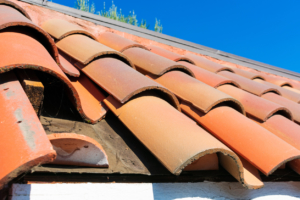2022 Florida Property Insurance Reform Part II:
Aging Roofs
Despite making up only 9% of the nation’s homeowner insurance claims, Florida is responsible for approximately 76% of insurance litigation in the US. This astounding statistic has led to rising premiums for Florida insurers over the past several years. Insurance defense attorney and Florida resident, Christine Renella from Zelle Law Firm in Fort Lauderdale notes, “The cost of insurance is becoming more and more unaffordable and litigation costs continue to skyrocket. As a result, many insurers have been forced to pull out of the sunshine state.”
While insurers reach insolvency at alarming rates, the Florida Senate Appropriations Committee recently passed two new bills designed to stabilize the struggling property insurance market. According to Renella, “This bipartisan bill seeks to implement the most significant and comprehensive property reforms Florida has ever seen. With the addition of pro-consumer measures, as well as protections for insurers, Floridians expect to see a decrease in litigation which will hopefully lead to a decrease in premiums.”
What does this reform look like for Floridians and Florida insurers? Will Florida’s 7 million homeowners see any relief in premiums as a result, and if so, when? Senate Bills 2-D and 4-D have several provisions. In the second part of our three-part series, we will focus on the sections that address aging roofs.
One major challenge Forte structural engineers see in Florida is the issue of alleged storm damage to old or poorly maintained roofs. With Florida’s extreme heat and storm conditions, Florida roofs often wear years of accelerated cosmetic or functional damage. Yet, to settle a claim, insurers need to know what damages directly result from the claim occurrence versus those that are due to pre-existing, wear-and-tear or deferred maintenance.
It is important to note that a “claim occurrence” is typically considered to be sudden and unexpected, however, occurrences may include continuous exposure to a harmful condition. Fundamentally, however, insurance is triggered by an accident, regardless of whether the accident occurs repeatedly, or suddenly. The date of the claim occurrence is significant to insurers, as they are only obligated to cover damages that occur during the life of an insurance policy. It is the homeowners’ responsibility to keep an eye on their roof and ensure it is maintained adequately and any harmful conditions are reported to insurers immediately, allowing damages to be mitigated and resolved promptly.
Some Florida insurers have refused to issue coverage based solely on the roof’s age. SB 2-D allows insurers to hedge their losses by allowing policyholders with roofs over 15-years-old to order a roof inspection, performed by a certified roof inspector at the policyholders’ expense. If the certified inspector determines that the roof has five or more years of useful life, the insurer is not permitted to refuse coverage.
SB 4-D further allows insurers to hedge against the severity of roof claims by changing the building code requirements established in 2007, commonly referred to as the “25% Rule.” The 2007 Florida building code, Section 611.1.1 stated that if more than 25% of a roofing system needs to be “repaired, replaced or recovered,” then the entire roof section needs to be brought up to code. In most cases, this means that when filing an insurance claim, the entire roof (or roof section) must be replaced. This rule has inadvertently cultivated fraudulent behavior among contractors and other assignees across the state, increasing the frequency of litigation and costly disputes.
Written by Janel Giarratano with contributions by:
Christine Renella, Zelle Law
Charles Long, P.E. Forte Consulting and Investigations, LLC




